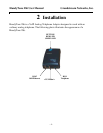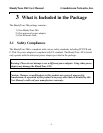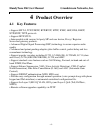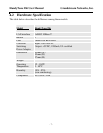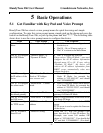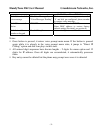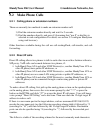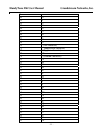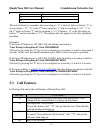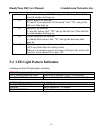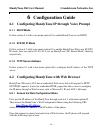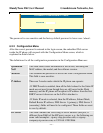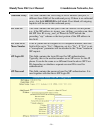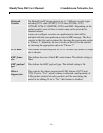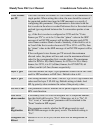
HandyTone 286 User Manual Grandstream Networks, Inc.
- 12 -
92 X
93 Y
94 Z
The rule of thumb to remember these encoding is: “a” is the first letter on button “1” so
its encoding is “11”. “b” is the 2
nd
letter on button “1” and its encoding is “12”. “c” is
the 3
rd
letter on button “1” and its encoding is “13”. Likewise, “d” is the first letter on
button “2” and its encoding is “21”. This pattern and rule applies to all other alphabetic
encoding.
Examples:
If the target IP address is 192.168.0.160, the dialing convention is
Voice Prompt with option 47, then 192168000160
followed by pressing the “#” key is it is configured as a send key or wait for more than 5
seconds. In this case, the default destination port 5060 is used if no port is specified.
If the target IP address/port is 192.168.1.20:5062, then the dialing convention would be:
Voice Prompt with option 47, then 192168001020*45062
followed by pressing the “#” key is it is configured as a send key or wait for 5 seconds.
If the target address is john@192.168.1.100:5062
, then the dialing convention would be:
Voice Prompt with option 47, then 51634262*3192168001100*45062
followed by pressing the “#” key is it is configured as a send key or wait for 5 seconds.
5.3 Call Features
Following table shows the call features of HandyTone-286.
Dial Key Call Features
*70 Do not disturb, it will give caller busy tone when called. This
setting will be released when user hangs up the phone.
*72 Unconditional Call Forward.
To use this feature, dial “*72” and get the dial tone. Then dial the
forward number and hang up.
*73 Cancel Unconditional Call Forward
To cancel “Unconditional Call Forward”, dial “*73” and get the
dial tone, then hang up.
*90 Busy Call Forward



